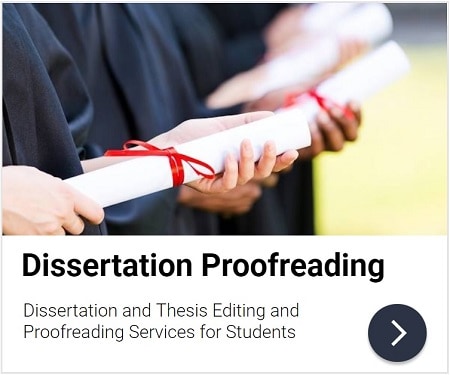5.6.3 Apostrophes and Quotation Marks
Apostrophes. Apostrophes are used primarily in formal scholarly prose to indicate possession. A standard singular possessive (or genitive) is formed by adding an apostrophe and an ‘s’ (’s) to the end of a word, but in some cases and especially for plural forms, an apostrophe alone is added; more rarely, an ‘s’ alone is added and, most rarely, ‘se’ is added. Because the correct format for the genitive of any particular word is somewhat unpredictable and is in many cases based on pronunciation or euphony, it can at times be difficult to decide what the correct format should be, especially for doctoral candidates who are not native speakers of English. To help with your decisions in this regard, the list below outlines situations in which each possessive form should be used. If you are uncomfortable with these rules and exceptions, you may want to opt for an alternative method (mentioned in the Chicago Manual of Style, 2003, pp.283–284) of using an apostrophe and an ‘s’ in most cases, but omitting the additional ‘s’ whenever a word already ends with an ‘s.’ However, as this much simpler approach does not take pronunciation into consideration, many scholars will not find it acceptable, so do seek approval from your department or thesis committee before deciding upon this compromise.
Add an apostrophe and an ‘s’ to:
- Singular nouns: ‘the man’s suit’ and ‘the glass’s contents.’
- Singular proper nouns/names referring to people, places and businesses: ‘Samantha’s house,’ ‘James’s book,’ ‘Marx’s theory,’ ‘Canada’s provinces,’ and ‘a Levi’s outlet.’
- Indefinite or impersonal pronouns such as ‘one,’ ‘anyone’ and ‘everything’: ‘one must follow one’s instincts’ or ‘it could be anyone’s apartment.’
- Singular acronyms and initialisms: ‘WHO’s policies,’ with ‘WHO’ standing for ‘World Health Organization,’ or ‘the MLA’s style,’ with ‘MLA’ standing for the ‘Modern Language Association’ (on abbreviations, see Section 6.3 below).
- Singular dates: ‘2013’s warmest day’ and ‘2001’s memorable disaster.’
- Plural nouns that do not end with an ‘s’: ‘women’s clothing’ and ‘the children’s playground.’
Add an apostrophe alone to:
- Plural nouns that end with an ‘s’: ‘the cats’ collars’ and ‘the participants’ scores.’
- Plural proper nouns/names that end with an ‘s’: ‘the Taylors’ house’ and ‘the Fergussons’ business.’
- Plural acronyms and initialisms that end with an ‘s’: ‘KIs (key informants) were used in the study and the KIs’ responses were recorded’ (see Section 6.3.6 below).
- Plural dates that end with an ‘s’: ‘the 1960s’ biggest concert’ and ‘the 1970s’ polyester styles.’
- Singular nouns that end with an ‘s’ sound if the extra ‘s’ would make pronunciation difficult: ‘the oasis’ trees.’
- Singular proper nouns/names that end with an ‘s’ sound if the additional ‘s’ would make pronunciation difficult and particularly if the name is long and not accented on one of the last two syllables: ‘Nicholas’ thesis.’
- Singular proper nouns/names of two or more syllables in which the last syllable is pronounced ‘iz’ or ‘eez’: ‘Bridges’ study’ and ‘the Ganges’ bank.’
- Singular nouns and names in French ending with a silent ‘s’ to avoid an awkward or misleading appearance: ‘Descartes’ words’ and ‘the marquis’ inheritance.’
- Classical names ending with ‘s’ or ‘es’: ‘Socrates’ words’ and ‘Dionysus’ rituals.’ For short classical names, the additional ‘s’ can be used, however (Zeus’s influence), and when classical names are used in scientific contexts, the extra ‘s’ is usually included: ‘Mars’s canals.’
- Singular nouns and names ending with an ‘s’ sound and used along with ‘sake’: ‘for goodness’ sake’ and ‘for Jesus’ sake.’ In ‘for old times’ sake,’ the word ‘times’ is plural, so only the apostrophe is added there as well.
- Names of places or organisations that take a plural form (or whose last element takes a plural form) ending with an ‘s’ even though the place or organisation is singular: ‘the United States’ president’ and ‘the Centre for Medieval Studies’ programmes.’
Add an ‘s’ alone to:
- The personal pronouns ‘our,’ ‘your,’ ‘her’ and ‘their.’ Although these are already possessive forms (‘our home,’ ‘your thesis’ etc.), an ‘s’ can be added for a somewhat different use of the possessive: ‘the house is ours,’ ‘the thesis is yours,’ ‘the cat is hers’ and ‘the car is theirs.’
- The pronoun ‘it’: ‘the azalea lost its flowers in the storm.’ Please note that when both an apostrophe and an ‘s’ are added to ‘it,’ the result is not a possessive, but a contraction meaning either ‘it is’ or ‘it has.’
- Names of wars known by their length: ‘the Hundred Years War,’ not ‘the Hundred Years’ War’ or ‘the Hundred Year War.’
- Names of some businesses and institutions, whether singular or plural, that were originally possessive, but are now generally written without an apostrophe: ‘a Woolworths store’ and ‘the Citizens Advice Bureau.’
Add ‘se’ to:
- The relative pronoun ‘who’: ‘the woman whose husband died.’ ‘Whose’ can also serve as the possessive of ‘which’: ‘the tree whose branches broke in the storm.’
When forming the possessive of compound nouns or ‘of’ phrases, the possessive indicator should be added after the last noun, using both an apostrophe and an ‘s’ if that noun is singular – ‘my daughter-in-law’s party’ and ‘the Queen of England’s doctor’ – but an apostrophe alone if it is plural: ‘Medieval Studies’ programmes’ and ‘the president of the United States’ speech.’ For a set of linked nouns, the apostrophe and ‘s’ should be added only after the last noun if the nouns are acting together in terms of meaning, as is the case with the joint authors of a single piece of writing or the joint owners of property: ‘Smith, Jones and Taylor’s book,’ ‘Beaumont and Fletcher’s comedy’ and ‘my sister and brother-in-law’s business.’ If, however, linked nouns are acting separately, the apostrophe and ‘s’ should be added to the end of each of the nouns: ‘Smith’s and Dobson’s different studies on the subject,’ ‘Sidney’s and Shakespeare’s sonnets’ and ‘my sister’s and brother-in-law’s perspectives differ.’
To indicate a residence or place of business without actually mentioning the residence or business, a possessive name or noun can be used: for a singular, an apostrophe and ‘s’ is used (‘she is driving to the doctor’s’ and ‘I am going to dinner at Mary’s’) and for a plural, an apostrophe alone is used (she went to a barbeque at the Masons’). Possessives can also indicate the length of a period of time in both the singular and the plural: ‘a moment’s notice’ and ‘in six days’ time.’ This possessive is not used, however, in similar adjectival constructions: ‘she is six months pregnant.’ A possessive form can also be used along with ‘of’ in a kind of double possessive when one of several things of the same kind is intended – ‘a speech of Harper’s’ and ‘a book of Sarah’s’ – and in some cases this construction can significantly alter the meaning: note the difference, for example, between ‘a photo of Fred’ and ‘a photo of Fred’s.’ This type of possessive tends to be used only with personal names or nouns relating to living people and it does not generally occur with standard nouns or when referring to an organisation or institution: for example, ‘a window of the building’ and ‘a friend of Hereford Cathedral’ are correct.
The nouns or pronouns that precede gerunds present particularly thorny problems when it comes to deciding upon whether a possessive should be used or not. In some cases, the possessive definitely should not be used: in ‘Students applying for library cards should line up at the front desk,’ the ‘Students’ are the subjects, but an apostrophe on that word would imply that ‘applying’ was the subject and would therefore be incorrect. In other cases, a possessive is clearly necessary: in ‘Richard’s driving saved them from the pile up,’ for instance, it is Richard’s ‘driving’ that is the subject of the sentence, so his name acts as an adjective and should take the possessive form, which happens, in this case, to sound natural. In ‘The mother worried about her daughters’ going to the nightclub alone,’ however, the plural possessive (daughters’) might seem awkward or even pedantic to some authors and readers, and the apostrophe will therefore often be omitted. Both forms are acceptable, however: the possessive emphasises the ‘going’ as the object of the mother’s worry, while ‘daughters’ without the apostrophe emphasises the ‘daughters’ as the objects of worry. Imagining a sentence with the noun in question replaced by the relevant pronoun can be helpful: in my first two examples above, for instance, ‘Their’ instead of ‘Students’ and ‘He’ instead of ‘Richard’s’ make nonsense of the sentences, confirming that a possessive is not needed in the first case, but is in the second. In the third example, however, ‘their going’ for ‘daughters’ going’ and ‘them going’ for ‘daughters going’ both sound as correct as the nouns themselves. In such hazy cases, it is best to use whatever form sounds most natural to you and to maintain consistent usage in similar instances throughout your thesis.
To make a word, phrase or title set in italic or bold font possessive, an apostrophe and an ‘s’ or an apostrophe alone should be added as appropriate, but the addition should remain in regular roman font: ‘Gone with the Wind’s memorable characters,’ for instance, ‘Anne of Green Gables’ popularity,’ ‘Emma Woodhouse’s matchmaking’ and ‘the second and third domains’ parameters’ (see also Section 6.2.2 on the use of special fonts). A word, phrase or title (of an article, chapter or poem, for instance) enclosed in quotation marks (single or double) should not be made into a possessive, however, since this would produce confusion with the quotation marks, so ‘of’ should be used instead: ‘the imagery of the “Ode to Autumn”.’ The awkward use of possessives in parenthetical phrases should also be avoided: ‘It was Sally, his sister’s, book’ or ‘It was Sally (his sister’s) book’ is far better as ‘It was his sister Sally’s book’ or ‘The book belonged to Sally, his sister.’ Possessives, especially in their plural form, should not be overused or used in a string one right after the other: ‘the participants’ fathers’ occupations,’ for instance, is clearer and smoother as ‘the occupations of the participants’ fathers’ (and, for that matter, ‘the second and third domains’ parameters’ which I use as an example above is better as ‘the parameters of the second and third domains’). Finally, apostrophes are not used to form the plurals of nouns of any kind (words, names, compounds, phrases, abbreviations or numbers), so correct plural forms are ‘boys,’ not ‘boy’s,’ ‘the Wilsons,’ not ‘the Wilson’s,’ ‘sisters-in-law,’ not ‘sister’s-in-law,’ ‘NGOs’ (for ‘nongovernmental organizations’), not ‘NGO’s’ and ‘the 1990s,’ not ‘the 1990’s.’ Only to increase clarity when letters (particularly lowercase), numerals or other symbols are discussed as objects can an apostrophe be used: ‘the three R’s’ as an alternative to ‘the three Rs,’ ‘four 9’s’ instead of ‘four 9s’ and especially ‘cross the t’s and dot the i’s,’ which is much clearer than ‘cross the ts and dot the is.’ If the apostrophes are not used in this last example (and similar constructions), the letters (but not the ‘s’ after each) should be set in either italic font (cross the ts and dot he is) or quotation marks (cross the ‘t’s and dot the ‘i’s) to distinguish them from the surrounding text (on this and some other uses of quotation marks, see below).
Apostrophes are also used to form contractions, in which certain letters are omitted and represented instead by an apostrophe, but many of these should not be used in the running text of formal scholarly prose (see also Section 5.4.7 above). ‘It’s’ for ‘it is’ or ‘it has’ (as I mentioned above, ‘its’ without an apostrophe is the possessive pronoun), ‘she’s’ for ‘she is’ or ‘she has,’ ‘I’ll’ for ‘I will,’ ‘don’t’ for ‘do not’ and ‘wouldn’t’ for ‘would not’ are good examples of informal contractions that are best avoided in a thesis. The same principle applies to those of a similar nature that are formed irregularly, such as ‘won’t’ for ‘will not’ and ‘ain’t’ for ‘am not,’ or that are so altered from their original form that no apostrophe could be appropriately placed (‘gonna’ for ‘going to,’ for instance, and ‘wanna’ for ‘want to’). Such contractions can be used when quoting direct speech or informal texts in your thesis, of course, and others that are basically archaic (such as th’, ev’ry, o’er, ’tis and learn’d, set in italics here to show the forms clearly) can still be used when quoting early sources or poetry. There are some contractions that are acceptable for wider use, however: ‘rock ’n’ roll,’ for instance, ‘dos and don’ts,’ ‘bo’sun’ and ‘ma’am.’ As the examples in this paragraph demonstrate, the spacing around apostrophes used to form contractions matches the spacing that would have been used around the letters that have been replaced: no spaces appear around the apostrophe if the letter is omitted mid-word, but a space should appear before the apostrophe if an initial letter is omitted (They say ’tis him) and after the apostrophe if a final letter is omitted (th’ ancient one). Apostrophes indicating an initial omitted letter can be tricky to key because Word automatically changes an intended apostrophe (’) at the beginning of a word into an opening single quotation mark (‘), which curls in the opposite direction, so do watch for that if you are using such contractions. If the program refuses to produce the correct mark, type two apostrophes in a row and the second will be the right shape – simply retain it and delete the first one. Finally, no apostrophe is necessary to indicate the missing letters in contractions now accepted as words in their own right, such as ‘phone’ (for ‘telephone’), ‘flu’ (for ‘influenza’) and ‘nineties’ (for ‘nineteen nineties’).
Quotation marks. Quotation marks can be single (‘’) or double (“”), and the decision to use one form rather than the other is normally based on the guidelines followed and the specific needs and preferences of individual authors, so do consider which will work best for your thesis and, if you are unsure, check with your university, department or committee to see which would be most acceptable. The primary function of quotation marks is to enclose text that is directly quoted from a source: that use of quotation marks is covered in Chapter 8 below. Here, I focus instead on the use of quotation marks for other purposes. They are used, for instance, to enclose the titles of articles, poems (if they are brief), songs, short stories, chapters, individual episodes of television and radio shows and other short works (e.g., the poem ‘Ode to a Nightingale’ and the short story ‘Dandy Lion Chains’) when those titles appear in the main running text of a thesis; in full bibliographical references (in a bibliography, reference list or notes), the format of such titles (including quotation marks) is determined by the referencing style or guidelines followed (see Chapter 7 below). Quotation marks are also used to enclose exact representations of test items and questions as well as instructions for participants and the responses obtained through questionnaires and surveys, which is logical since the words cited are in fact quotations in such cases, though they may be English translations from another language. Quotation marks can also be used to enclose definitions and other explanations of a foreign word or phrase (sed noli modo, meaning ‘but not now’), and to mark an unusual or newly coined word or phrase, or a word or phrase used in a particular or technical way (although technical or key terms in a thesis can instead be introduced in italic or, more rarely, bold font: see Section 6.2.2 below; on quoting and translating foreign languages, see Section 8.4 below). As a general rule, only the first appearance of such words or phrases in a thesis (or chapter) should be enclosed in quotation marks; subsequent mentions and uses do not require special marking, though in certain discipline-specific cases, such as cultivar names in botany or key quoted terms in textual studies, the quotation marks are retained. Finally, quotation marks are used for so-called scare or sneer quotes, which tend to distance an author from the word or phrase enclosed and imply something of an apology or qualification for terminology that is informal or colloquial, that would not have been the author’s own choice or that is used in odd, inappropriate or ironic ways. Such words and phrases can be subtle and various, but a few simple examples might be helpful: ‘The children’s scores were compared to those of “normal” children’; ‘Oh, he is indeed “organised” – I just rearranged all his files’; and ‘Of course modern students are “much more intelligent” than their medieval counterparts were.’
As a general rule, quotation marks are not used for simple emphasis – italic font is preferable for that – but they can be used effectively for that purpose. Some style guides recommend that the two different types of quotation marks (single and double) not be used for different tasks (beyond double marks within single ones when quoting, single marks within double and so on: see the discussion of this pattern for direct quotations in Section 8.1 below), warning of a result ‘more confusing than helpful’ (Butcher et al., 2006, p.271). It is important, however, for an author who uses a considerable amount of direct quotation as well as a number of terms that require definition, introduction or emphasis to distinguish between the quotation marks used for direct quotation and those used for other purposes. If no distinction is used, it can be unclear to your readers which parts of your text are actually quoted, so the best policy is to reduce your use of quotation marks beyond direct quotation to a minimum, but, if after so doing, you find that you still need to use quotation marks for several purposes, you may want to adopt one kind (double marks, for instance) to enclose direct quotations and use the other kind (single marks) around definitions and unfamiliar or technical words or phrases.
Why PhD Success?
To Graduate Successfully
This article is part of a book called "PhD Success" which focuses on the writing process of a phd thesis, with its aim being to provide sound practices and principles for reporting and formatting in text the methods, results and discussion of even the most innovative and unique research in ways that are clear, correct, professional and persuasive.
The assumption of the book is that the doctoral candidate reading it is both eager to write and more than capable of doing so, but nonetheless requires information and guidance on exactly what he or she should be writing and how best to approach the task. The basic components of a doctoral thesis are outlined and described, as are the elements of complete and accurate scholarly references, and detailed descriptions of writing practices are clarified through the use of numerous examples.
The basic components of a doctoral thesis are outlined and described, as are the elements of complete and accurate scholarly references, and detailed descriptions of writing practices are clarified through the use of numerous examples. PhD Success provides guidance for students familiar with English and the procedures of English universities, but it also acknowledges that many theses in the English language are now written by candidates whose first language is not English, so it carefully explains the scholarly styles, conventions and standards expected of a successful doctoral thesis in the English language.
Individual chapters of this book address reflective and critical writing early in the thesis process; working successfully with thesis supervisors and benefiting from commentary and criticism; drafting and revising effective thesis chapters and developing an academic or scientific argument; writing and formatting a thesis in clear and correct scholarly English; citing, quoting and documenting sources thoroughly and accurately; and preparing for and excelling in thesis meetings and examinations.
Completing a doctoral thesis successfully requires long and penetrating thought, intellectual rigour and creativity, original research and sound methods (whether established or innovative), precision in recording detail and a wide-ranging thoroughness, as much perseverance and mental toughness as insight and brilliance, and, no matter how many helpful writing guides are consulted, a great deal of hard work over a significant period of time. Writing a thesis can be an enjoyable as well as a challenging experience, however, and even if it is not always so, the personal and professional rewards of achieving such an enormous goal are considerable, as all doctoral candidates no doubt realise, and will last a great deal longer than any problems that may be encountered during the process.
Interested in Proofreading your PhD Thesis? Get in Touch with us
If you are interested in proofreading your PhD thesis or dissertation, please explore our expert dissertation proofreading services.


Services
PhD Dissertation Proofreading
Our PhD dissertation proofreaders specialise in improving grammar, sentence structure, citations, references, clarity, logical flow and readability.
Master’s Dissertation Proofreading
To avoid failure and its consequences, send your dissertation to our master’s dissertation proofreading service.
Scientific Dissertation Proofreading
Our scientific proofreaders specialise in correcting and perfecting the language, editorial styles and references across all science fields.
Headquarters
Dissertation-Proofreading.com
Allia Future Business Centre
The Guildhall
Market Square
Cambridge
CB2 3QJ
United Kingdom
More Expert Proofreading Services
Journal Editing
Journal article editing services
PhD Thesis Editing
PhD thesis editing services














